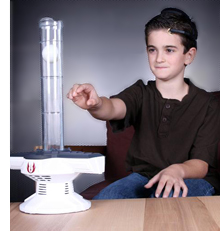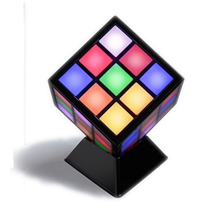[The following is a brief article from my observations of watching over 3, 000 commercials that target children. It was picked up by Playthings Magazine and is running in their February 2009 issue. I have many more thoughts and hours of edited video to share (teaser clip at end of article). If you’re interested in additional findings, shoot me an email or give me a call.]

Most people use TiVo to fast forward through commercials. For eight weeks this past fall, I fast forwarded to the commercials. Specifically, to commercials aimed at kids.
My curiosity about television ads that air during children’s programming started quite by accident. While incorrectly programming my TV’s digital recording device, I inadvertently found a wealth of new product information being advertised to children. Intrigued, I began to watch what I’d captured.
The numbers game
In any given hour of children’s television programming—especially during shows that air on Saturday or Sunday mornings—you’re likely to find about 10 to 16 minutes of commercials, depending on the station being watched. That’s about 25 to 40 commercials in an hour. During that time, you’ll see ads that promote other children’s television shows, places junior might like to eat, shoes and clothes kids might like to wear … and a wealth of technology products they might like to do just about anything with.
In fact, it would seem that 60 to 75 percent of child-targeted commercial time is dedicated to promoting technology of all types. This includes both electronic and traditional toys, dolls, video games, virtual worlds and websites. As you can imagine, all the big toy names are buying up ad time in bulk; companies like Hasbro, Mattel and Disney, Spin Master, Techno Source, Jakks Pacific, MGA Entertainment, WowWee, Play Along and Crayola are all promoting through television.
Video games grab attention
Having started my experiment just before the holiday season, I found a number of companies I didn’t expect to see in such heavy rotation, like Nintendo, Electronic Arts and UbiSoft—all biggies in the video game world. In that same hour, you were as likely to see as few as two or as many as eight different commercials for Nintendo’s DS or Wii. And because this was during kids’ programming, Nintendo’s campaign didn’t include ads for the Wii Fit or other products primarily for adults.
Some big items that first jumped out at me with technology included toys that require being connected to a computer in order for kids to fully experience their value. Two toys of note were LeapFrog’s handheld Didj or Bandai’s Mega Mission Helmet, which includes a USB cable as part of the play experience. Build-A-Bear Workshop also ran a series of ads to promote a unique virtual world along side its tangible teddy bears. Commercials for other virtual destinations included Disney’s Pixie Hollow, Radica’s Funkeys and Cartoon Network’s own FusionFall, a massively multiplayer online game featuring characters from many of its most popular shows. According to advertisements, animatronic robots also continue to evolve, be it Thinkway’s Wall-E toys, Fisher-Price’s interactive version of Ming Ming from The Wonder Pets, or even Kota the robotic dinosaur from Hasbro’s Playskool division.
And so, after consuming volumes of weekend commercials, I began to develop a sixth sense for advertising in the toy space. No matter when I watched, my newly acquired powers allowed me to notice other product differences across time slots. For example, preschool toys, on the whole, were promoted most heavily during weekday mornings. However, learning products’ ads have a different time slot; they aired during both weekday mornings as well as early/late evenings, presumably after parents have tucked their little ones into bed.
While toy advertising remained largely daytime fare, video games spanned all hours, but even then there were some surprises. Nintendo DS and Wii games’ ads could be found just about any time of day or night. However, commercials for Microsoft Xbox 360 titles only appeared during the day if the title being promoted was also released for the Nintendo Wii. Otherwise, Xbox-exclusive titles didn’t appear at all until later, during the nighttime hours.
And as much as there was to learn about technology products advertised on television, I stumbled upon a unique find regarding what was not being promoted. In all the time I watched, I did not see a single Sony ad. Not one for the PSP. Not for the PS3, nor for any Sony product whatsoever. I’m not sure what this means, but I found this absence odd—and surprising.
The other tech ‘toy’
After looking at so many child-friendly technology-based products, I also started to wonder about cell phones and kids. The number of kids ages 9 to 12 that own a cell phone is growing. Whether that’s good or bad, there’s no denying the trend. I asked myself, after seeing so many great Apple iPhone and iTouch commercials, how long would it be before I start to see similar Apple ads targeting children? Could Apple make a play for the younger set with an ultra-slick tech toy? Or could we also someday see cell phone plans being promoted specifically to kids during children’s programming?
Midnight madness
After the holidays, I noticed some differences in commercials for kids’ products; primarily, almost all of the toy offerings went away, literally evaporating the very first minute into December 25th. However, ads for video games, virtual worlds and web-connected toys did not. The difference between toy product and video game product promotion couldn’t be more striking as I watched in the days and weeks after the holidays. What does this say about the earning potential of technology toys in general? Can toys that are considered “platforms†benefit from ongoing advertising in the same way that video games do?
My exploration only included advertisements found on television, though there are a number of other media outlets where tech products for children can be promoted: online, magazines, radio, movies, email, even in-store events. While it may seem that technology products will be the future “must have†item for kids, I often remind myself that in order for toy companies to successfully benefit from a large investment in technology-based products, large advertising budgets must follow in order to increase exposure, revenues and profits to cover that investment. This might just mean that the economics for tech-free toys do not require as much of an advertising commitment, but product awareness certainly appears to benefit all.
Frankly, I can’t tell exactly what all of this says about the future of technology and kids, but I do spend a lot of time looking at the play patterns of children with traditional toys and how these patterns change when technology is introduced.
I think that if we see more technology at this month’s Toy Fair—more even than in prior years when companies did debut a lot of technology toys—we might well get a glimpse of an answer.
Average Rating: 4.6 out of 5 based on 278 user reviews.




